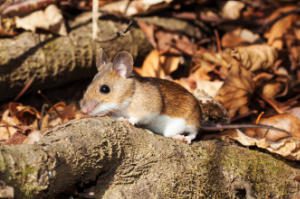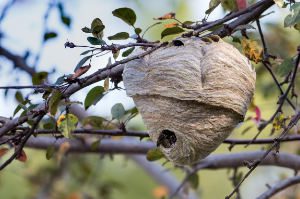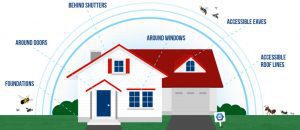When is the time to act on pest control?
By Zachary Ciras on December 28, 2021.
The best time to plant a tree was 20 years ago. The second best time is now.
Chinese Proverb
No time like the present
Some pest activity is compelling enough on its own to warrant immediate active. When a large rodent is chewing through your drywall or a yellow jacket void nest is starting to break through the ceiling, it doesn’t take much consideration to call for a pest control service. Other times, however, it may be difficult to determine when active is actually needed, and when you can wait. The pitter-patter of mouse feet in the attic, a few small dropping on the basement work bench, or the occasional ant walking through the kitchen may need to be taken care, but is there a rush? Perhaps being a member on a Preventative Maintenance Program is a better route?
What is so bad about mice in the house?
Mice and small rodents can be cute enough to be kept as pets, especially “fancy” mice and new world rodents such as hamsters, gerbils, and Guinea pigs. However, when commensal and semi-commensal rodents invade your home without a controlled welcome, they cause a multitude of problems. Health issues can be a result of mice in the house. Deer mice are carriers of hantavirus among other illnesses. House mice are known to transit bacteria including salmonella and listeria. White footed mice are strongly linked to Lyme disease transmitted through black legged (deer) ticks.
Apart from health issues resulting from mice, they pose a risk to damaging your home as well. Rodents are chewers. In fact, the term “rodent” comes from the Latin “to gnaw,” so it’s in their nature to chew! Mice and rats will chew on wires, PVC pipes, drywall, and anything else they feel like. This can result in fires, floods, or other damage.
Can it wait?
Many people will assume some level of mouse infestation in their home as normal. This is not a given in many cases, especially if your home is fairly modern with a poured concrete foundation and is well maintained. Older homes with fieldstone foundations that need to be repointed, garage doors that need repair, or exterior brick or stone chimney that allow mouse access to the roof may make it more difficult to exclude mice from entering the home. In most cases, our technicians can close primary entry points into your home from the exterior and point out other areas of concern to prevent future entry.
In most cases, controlling a mouse infestation takes some time to be accomplished. By the time you notice mice in the house, they have probably been there for some duration of time. Removing them may take a couple of weeks in total after the service. This allows for the mice to contact the materials, a few to several days for baits to work, and for every mouse to expire, assuming no more mice can enter. This process may happen more quickly, but usually 14 days is a good period to judge the efficacy. The sooner you act by calling the trained professionals at Colonial Pest, the sooner the process can begin, even if it is not an overnight result. See: ( GOT MICE IN YOUR HOUSE?)
Ticks and Mosquitoes
The best times to target ticks with acaricides (pesticides for ticks) is twice per year: in the spring when the snow has melted, and again in the fall as the ticks get ready for the winter. Controlling mice, rabbits, and other animals from around your property will also help to lessen the amount of ticks in your yard. To do this, reduce clutter, stored items, and dense vegetation from the parts of your property where people of pets would be most likely to contact. (See: MOUSE NESTS IN YOUR YARD ARE HIDING BLACKLEGGED TICKS!)

White footed mouse (woodmouse, Peromyscus leucopus) walking on branch, springtime
Mosquito prevention starts with preventing standing water from accumulating around your property. Hollows in trees should be drained and filled in, containers such as tires, buckets, and bird baths should be routinely emptied if not removed, and leaf litter should be removed to prevent breeding sites. Should treatments be required for mosquitoes, once per month (or every three weeks) during the active seasons (early spring through late fall) are the best times to treat. Be mindful if insecticide for mosquitoes is used; pollinators and other non-target insects and animals can be harmed by these applications, and chemical trespass into your neighbors yards might occur and should be prevented.
Just a few ants, or an infestation?
Seeing an odd ant or two foraging during the spring and summer may be normal, but when do we need to act on a potential infestation? That largely depends on the type of ant and the number of ants. Most ant species of concern are nocturnal, with most of the activity going on while you’re sleeping. If you see 6 ants during the day, for example, there’s likely much more activity occurring at night. Carpenter ants may have satellite colonies located within wall voids and behind insulation with hundreds of individuals. Carpenter ants are most easily identified by their larger size, often exceeding 1/4 inch. More than one or two carpenter ants might warrant a treatment, especially if the home is not currently protected by a maintenance program. Carpenter ants cause damage to your home, chewing through wood and insulation, exploiting water rot and structural issues. A carpenter ant forager’s natural life span is about 30 days, so targeting hidden nests and preventing new entry is critical. (See: Are Carpenter Ants Occupying His Man Cave? and Answers to the Top Seven Carpenter Ants Questions )
Small ants are more common, and more often a nuisance pests when compared to carpenter ants. Nuisance pests though they may be, small ants such as the odorous house ant and the pavement ant can still spread disease by trailing through contaminated surfaces and tracking the contaminants with them. Luckily, these ants are largely controllable through using a bait inside and maintaining an exterior perimeter barrier, such as is provided by our program.
Wasps

A Bald-faced Hornet nest attached to a tree
Wasps come in many varieties, but it can be useful to group these into paper wasps which make umbrella nests, and carton nesting yellow jackets and bald faced hornets. The former, paper wasps, are active early in the springtime and continue throughout the year until the late fall. They are only semi-social insects and are not generally very aggressive. The umbrella style nests can be removed and the structure can be treated for prevention at about any time of the active season.
The more aggressive and territorial Yellow Jackets and Bald Faced Hornets start to make themselves known later in the season, generally active between July and the end of the fall. These build exposed ball-shaped carton nests, nests in the ground, or nests in voids within your home. A yellow jacket or BFH nest grows quickly and the individuals pose threats to anyone in their perceived territory. If the nest is in an area frequented by your family, you will want to act as quickly as you can. Yellow jackets nesting within wall or ceiling voids pose the additional threat of breaking through the drywall or plaster and actually invading your home. If you see a wet spot during the latter yellow jacket season and hear buzzing or chewing in the area, you will want to call right away for quick service. (See: Plan to Enjoy Your Yard Without Stinging Insects!)
Preventative Maintenance Program

The best option for most homes is our ongoing Preventative Maintenance Program, which provides targeted semi-annual treatments (twice per year in the active insect season) plus the assurance that covered pests will be addressed quickly should problems arise between services throughout the year. Most pest issues do not require same day or even same-week attention, though we get to you as soon as we can. If you have any questions about timing your pest control, or you would like to set up our recurring Preventative Maintenance Program to keep your home protect throughout the year, our friendly and helpful representatives would love to chat with you to help determine your best course of action.
(Also see our free eBook on Preventative Maintenance. )